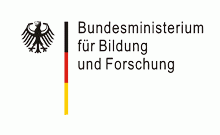What is GBOL?
Welcome to the GBOL project!
GBOL – G erman B arcode o f L ife: → Inventory and genetic characterization of animals, plants and fungi in Germany.

The GBOL project aims at capturing the genetic diversity of animals, fungi and plants in Germany. The genetic inventory of these organisms is based on their DNA barcodes (=genetic fingerprint). As a science nation, Germany has taken a leading role in an international consortium of natural history museums, zoos, herbaria, research organizations and government institutions to jointly establish the “DNA barcode library of life” (pdf). Currently there are about 4.6 million DNA Barcodes belonging to ca. 250,000 described species of plants, animals and fungi recorded in the international BOLD database (Januarhttps://www.bolgermany.de/wp/en/home/links#kooperationspartnery 2016). The DNA barcodes of all animals on BOLD constitute about 440,000 different species hypotheses, termed BINs (barcode index number). BINs are molecular entities, which are based on clustering DNA barcodes by similarity and represent putative species until a taxonomic revision has revealed their species membership. The systematic assessment and grouping of BINs allows to categorize and monitor their occurrence in time and space, even if they belong to yet undescribed species.
GBOL is a national network of various natural history museums and other biodiversity research institutions in Germany. The GBOL partners provide their professional taxonomic expertise and existing infrastructure (collections / biobanks, databases, bioinformatics platforms and laboratories) to comprehensively collect, catalog, describe, and sequence the animal, plant and fungi species in Germany. While the focus in GBOL during the first phase (2012-2015) was laid on the creation of a reference database, we will now also develop different applications of DNA barcoding in the second project phase (2016-2018). Sequence and metadata generated in GBOL will be integrated in the global barcode reference database “BOLD“.
The construction of a genetic national library of biodiversity consists of two steps: First, specialized experts (taxonomists) identify species based on their morphological characters. The taxonomists have an extensive knowledge of the morphology, ecology, reproductive mode and life cycle of certain taxa, which proves extremely valuable for species determination. In a second step, the DNA barcode will be decoded using modern DNA sequencing methods. The DNA barcode together with the species profile will be made available in publicly accessible DNA barcode reference database, such as BOLD, NCBI GenBank or AlgaTerra.
The professional GBOL taxonomists depend on the active support and cooperation of experienced citizen scientists and non-professional taxonomists from all over Germany to meet this GBOL task.
More information about the GBOL-project is available in our brochure!



